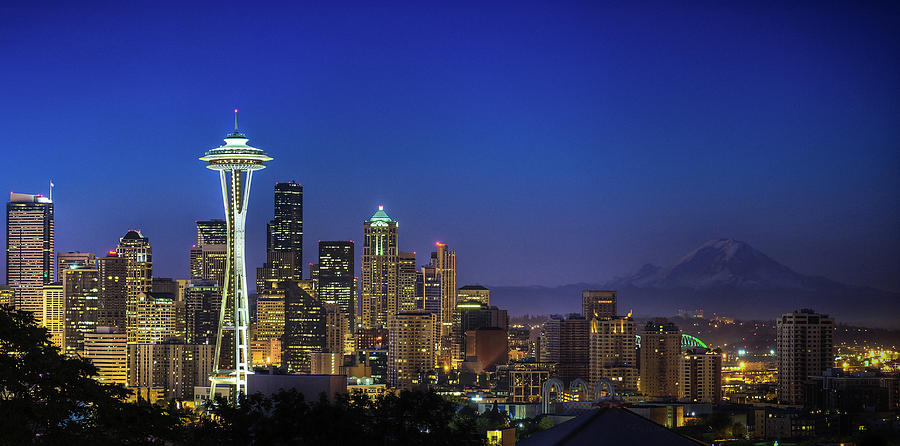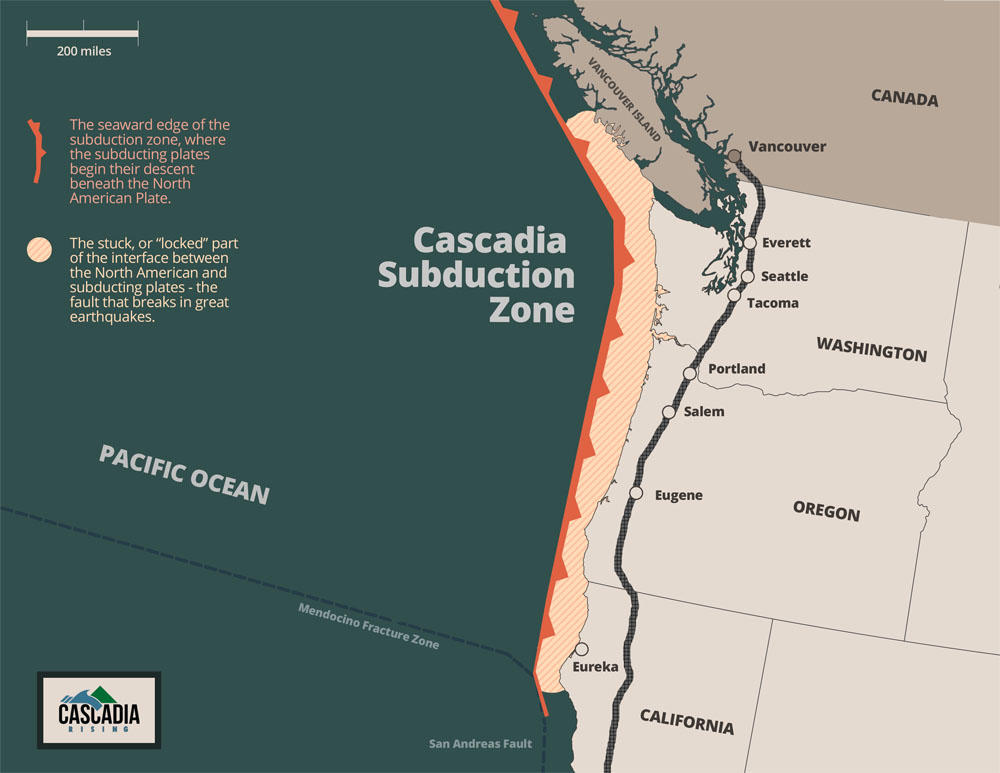By David Jacobson, Temblor
Check your seismic hazard rank

In the event of a large Cascadia Subduction Zone (CSZ) earthquake, damage will be significant, and lifelines will be cut off. Approximately 8 million people live in the earthquake damage zone, and the Seattle and Portland metro areas are home to Nike, Amazon, Boeing, and Microsoft. Therefore, preparing for a large-scale earthquake along the entire West Coast is vital. Last June, Cascadia Rising, a FEMA-designed exercise specifically addressed a M=9.0 Cascadia Subduction Zone earthquake. Findings from this exercise showed that the state of Washington lags far behind California, Oregon, and British Columbia in its earthquake preparedness.

In response to these findings, Governor Jay Inslee convened a subcabinet of state agency directors on Tuesday. He stressed that, “while we cannot prevent or predict earthquakes or tsunamis, we can be better prepared to respond and recover quickly when these natural disasters do occur.” In order to determine proper methods, the 2012 Resilient Washington report was examined as it provides a general framework to help the state mitigate losses in the event of an earthquake.

This report not only addresses what could happen in a Cascadia earthquake, but other events as well. For example, the Seattle Fault runs underneath the city of Seattle, and has the potential to rupture in M=7+ earthquakes. Therefore, multiple scenarios have to be considered when increasing earthquake preparedness.
One example of how far Washington lags behind, is its school retrofits. While California, Oregon and British Columbia have already allocated tens of millions of dollars per year to retrofit schools, Washington is still in the process of determining which schools are most at risk. Retrofitting schools is of primary concern because many were not built to current seismic codes, and since they are often used as emergency shelters following disasters.
The main objectives from this subcabinet were to determine both how the state could better prepare, and how to reduce the time needed to recover. This recovery time has come under question, as the Washington Emergency Management Division recently amended their recommendations towards earthquake kits. Prior to Cascadia Rising, the state advised that people should have enough food, water, medicines, and other basic supplies to last three days. Now, it is recommended that people have kits which could sustain them for at least two weeks.

Such an increase suggests that following a large earthquake, people may be without emergency attention for longer than initially thought. The combination of retrofitting schools and encouraging citizens to have adequate earthquake kits is, according to Jim Buck, a former legislator from Clallum County, vital to survival following a large earthquake. He is most concerned about losing people to exposure due to lack of shelters, food, or fuel to warm shelters.
Despite measures taken to determine how the state could better prepare for an earthquake, the funding needed may not come any time soon. According to the director of the Washington state Emergency Management Division, money directed towards mitigation is unlikely in the current budget cycle. Therefore, Governor Inslee stated that in order for this to work, resources from federal, state, county, local and tribal governments must be pooled.
Sources
Northwest Public Radio (NWPR)
Washington Military Department
Washington Emergency Management Division
Cascadia Rising
Resilient Washington State
- Earthquake science illuminates landslide behavior - June 13, 2025
- Destruction and Transformation: Lessons learned from the 2015 Gorkha, Nepal, earthquake - April 25, 2025
- Knock, knock, knocking on your door – the Julian earthquake in southern California issues reminder to be prepared - April 24, 2025
